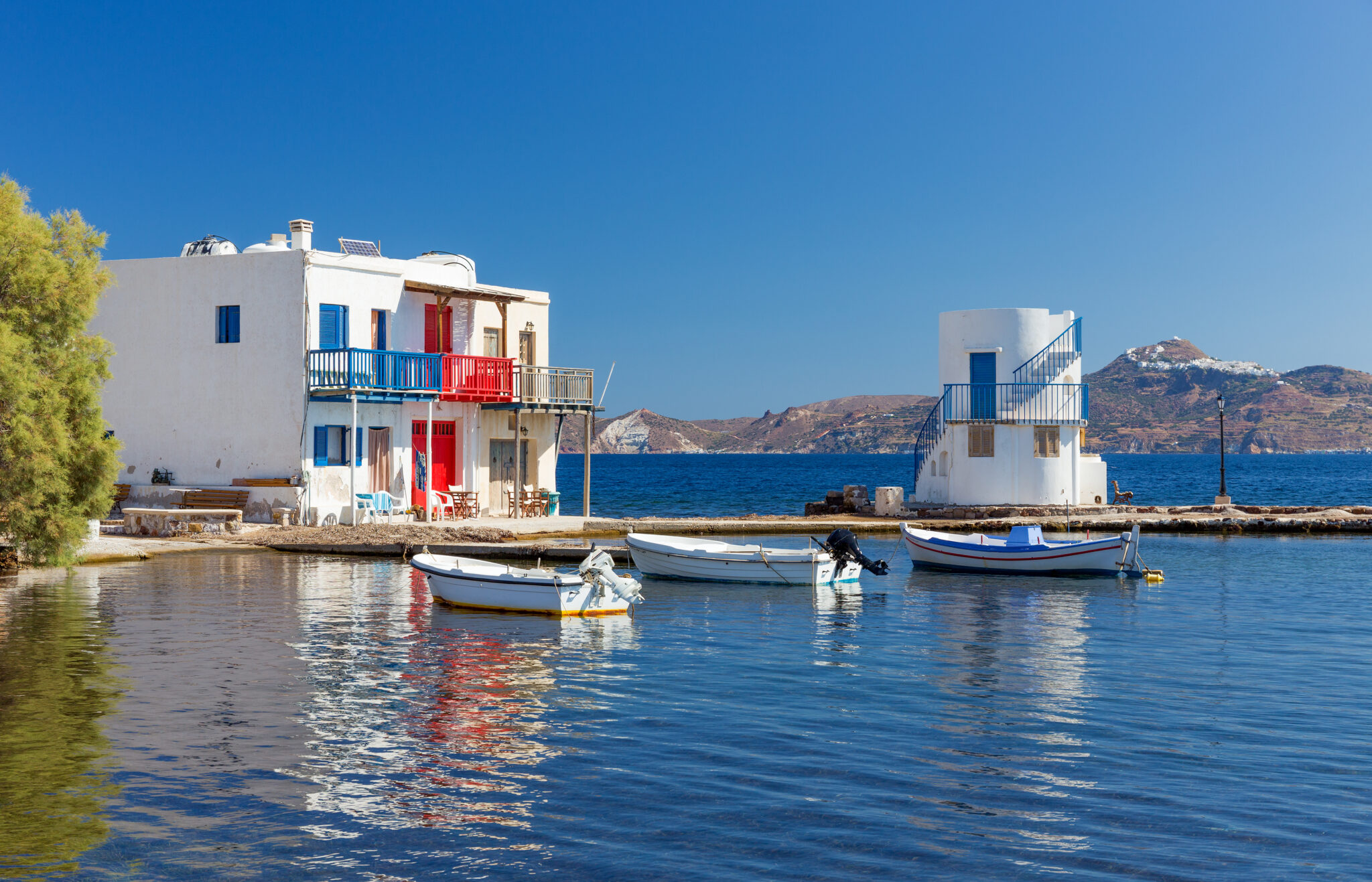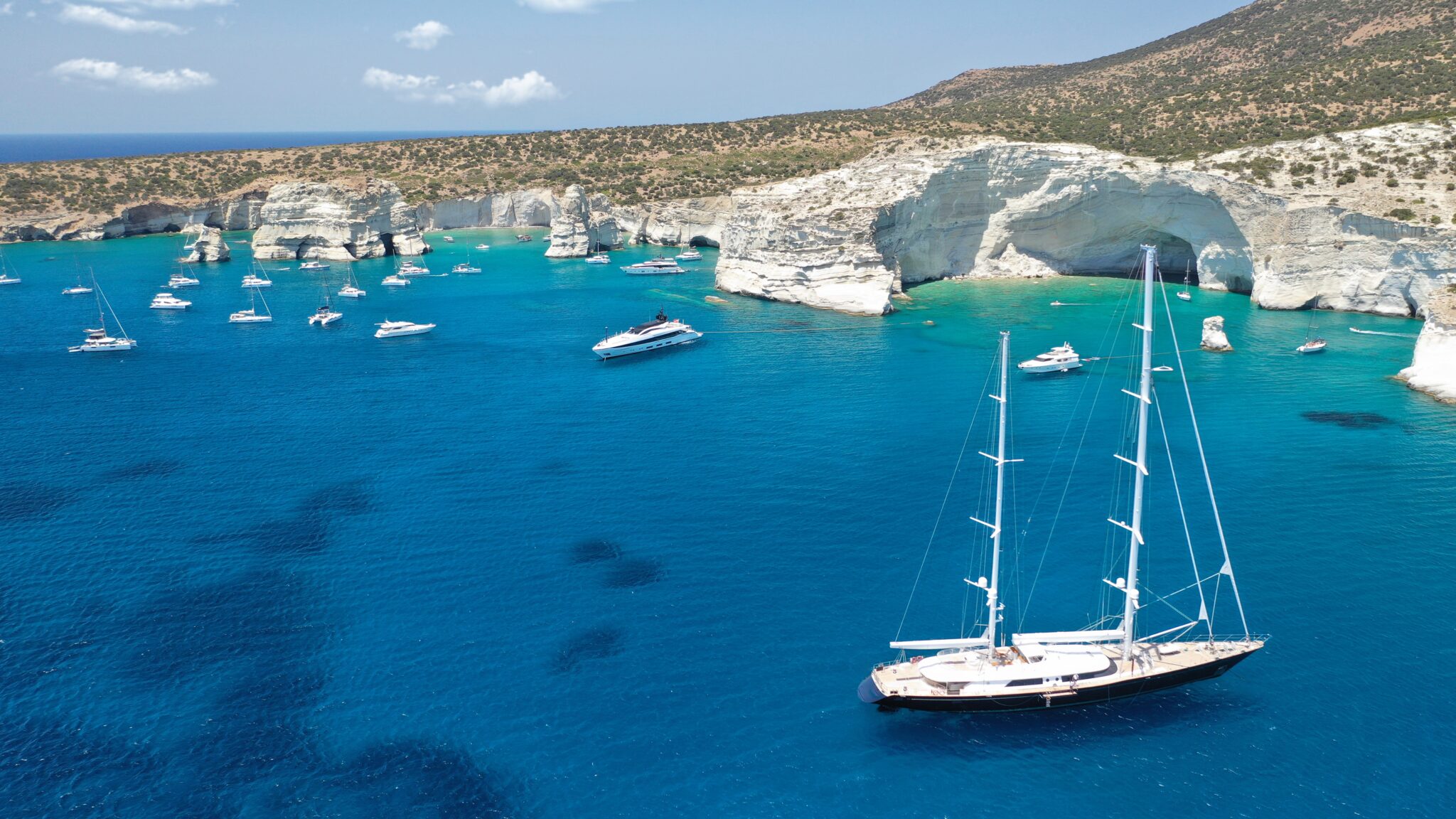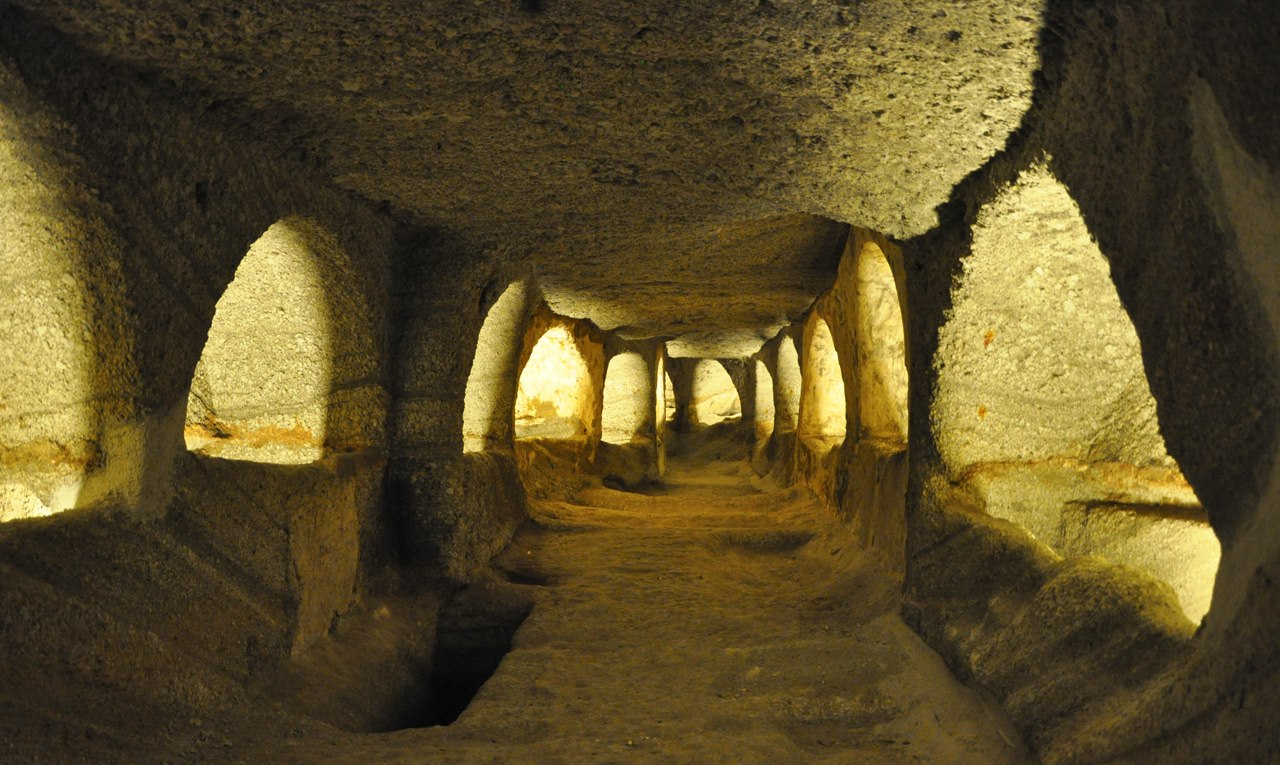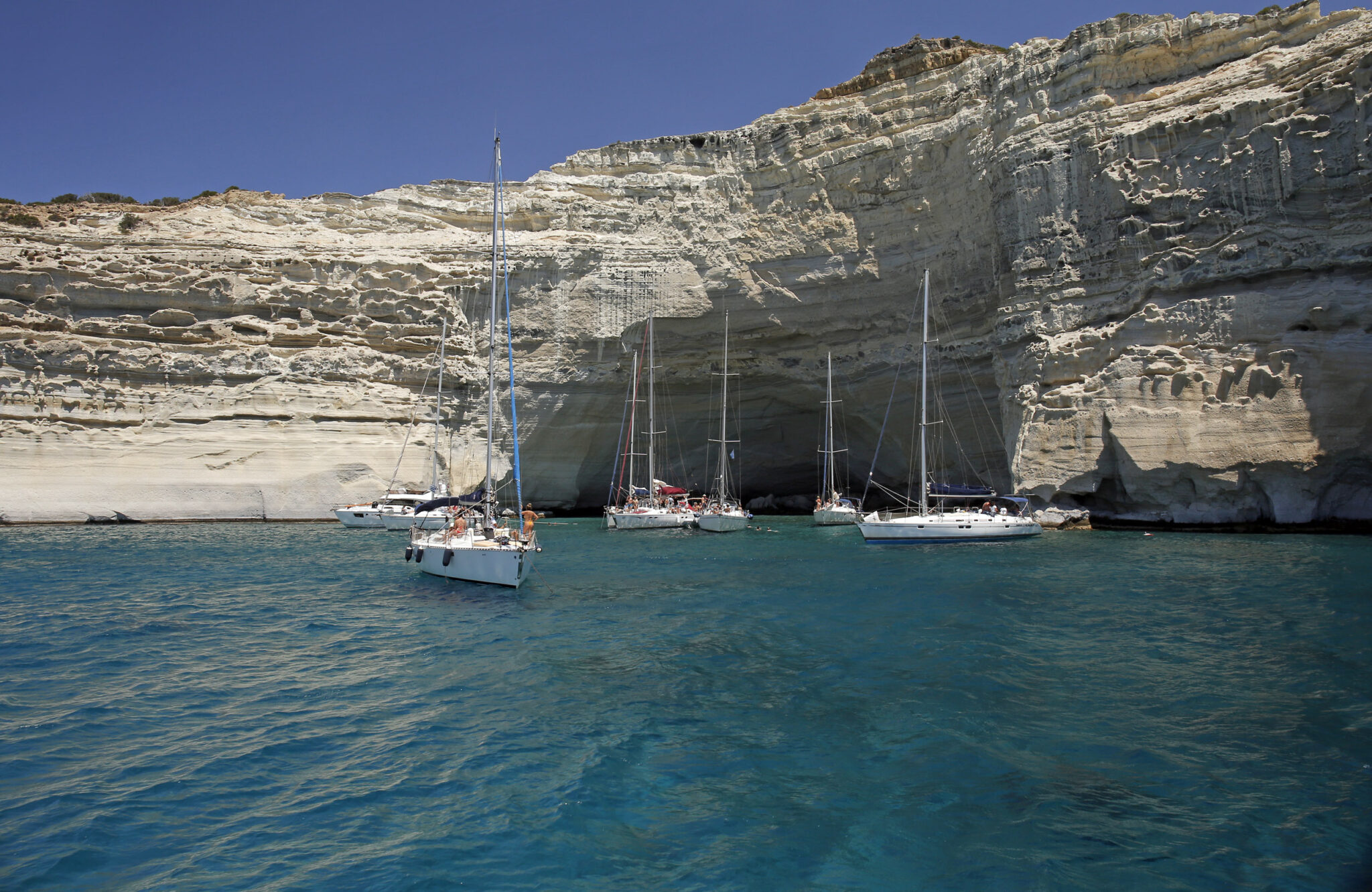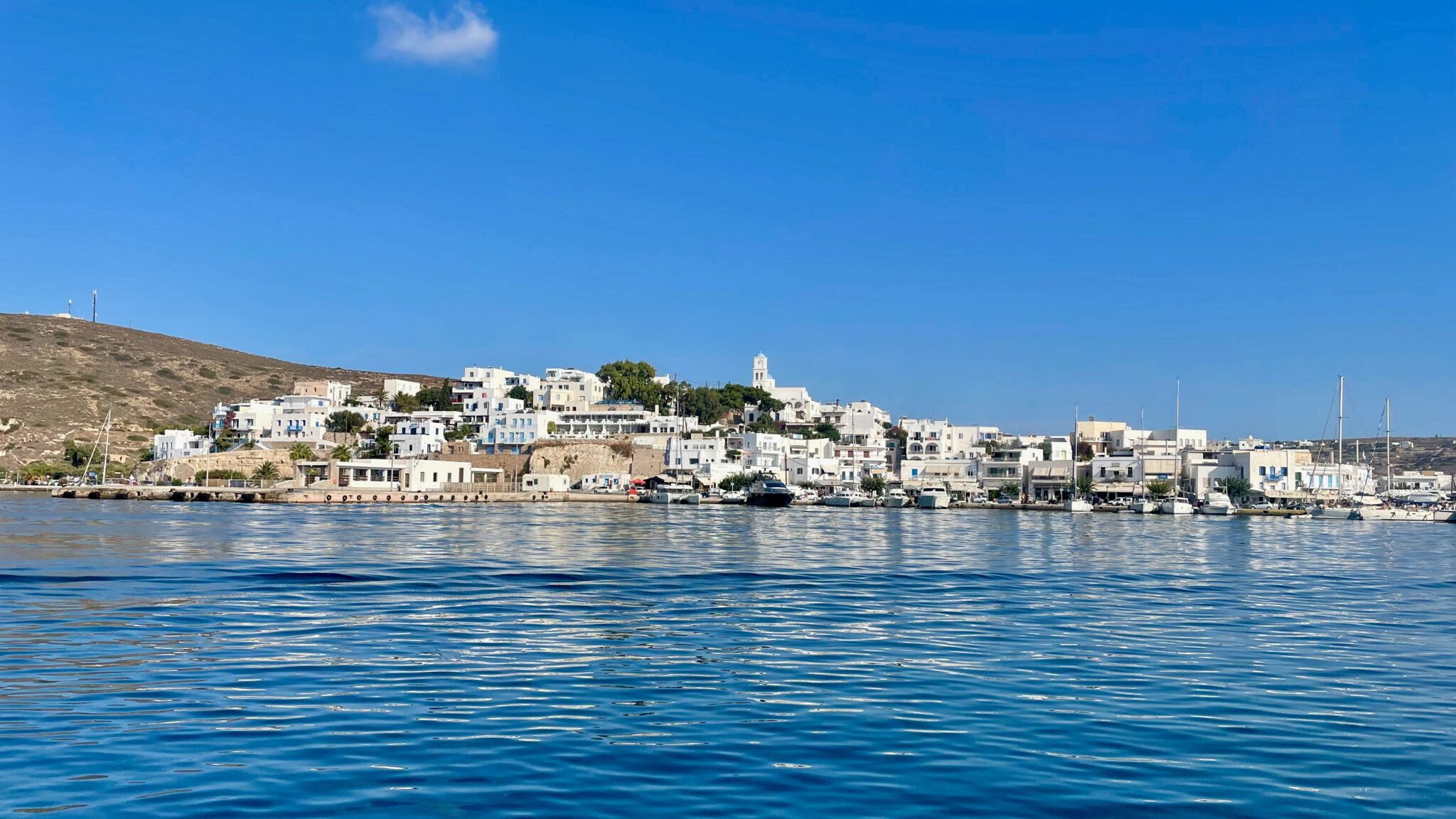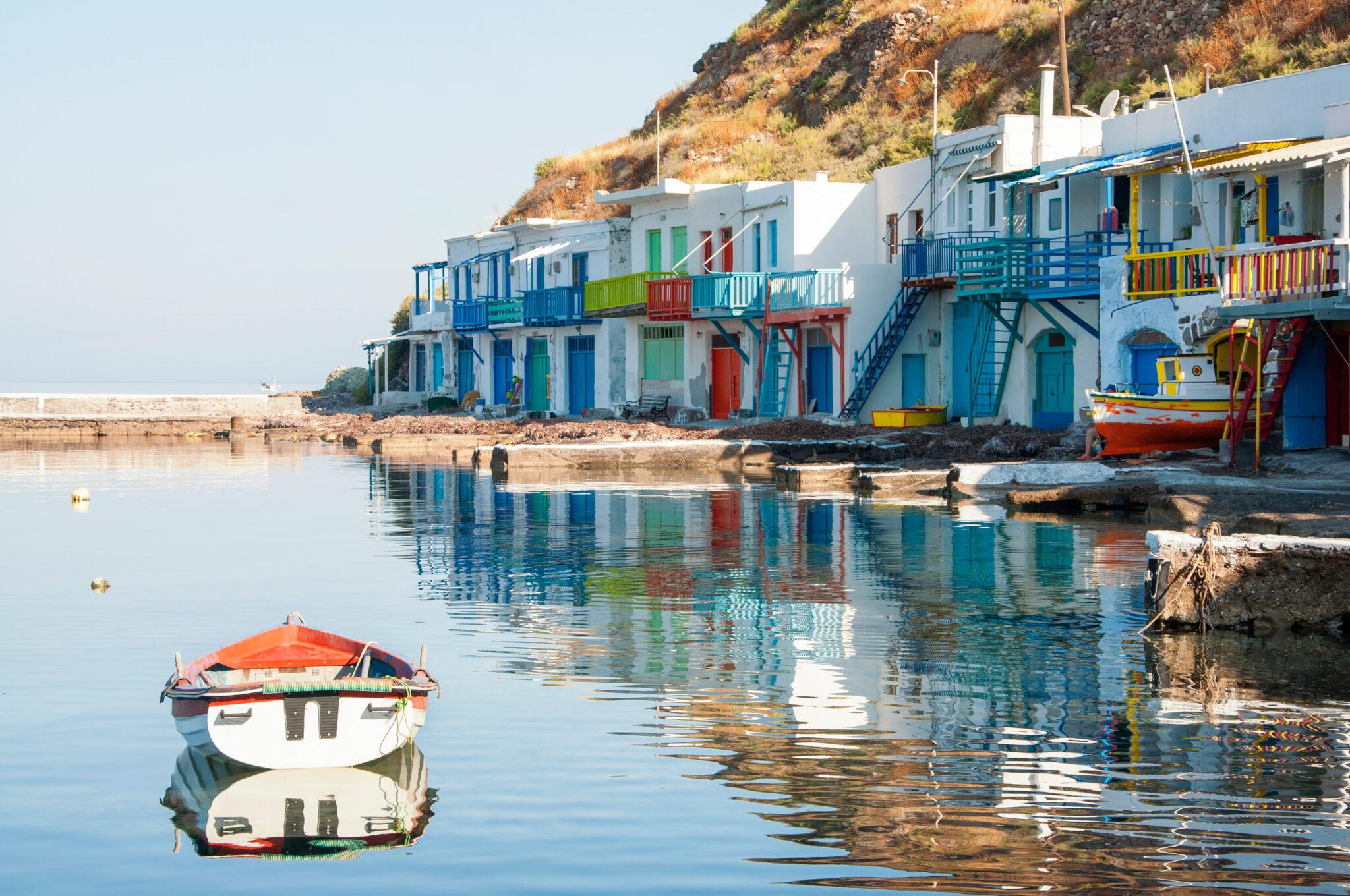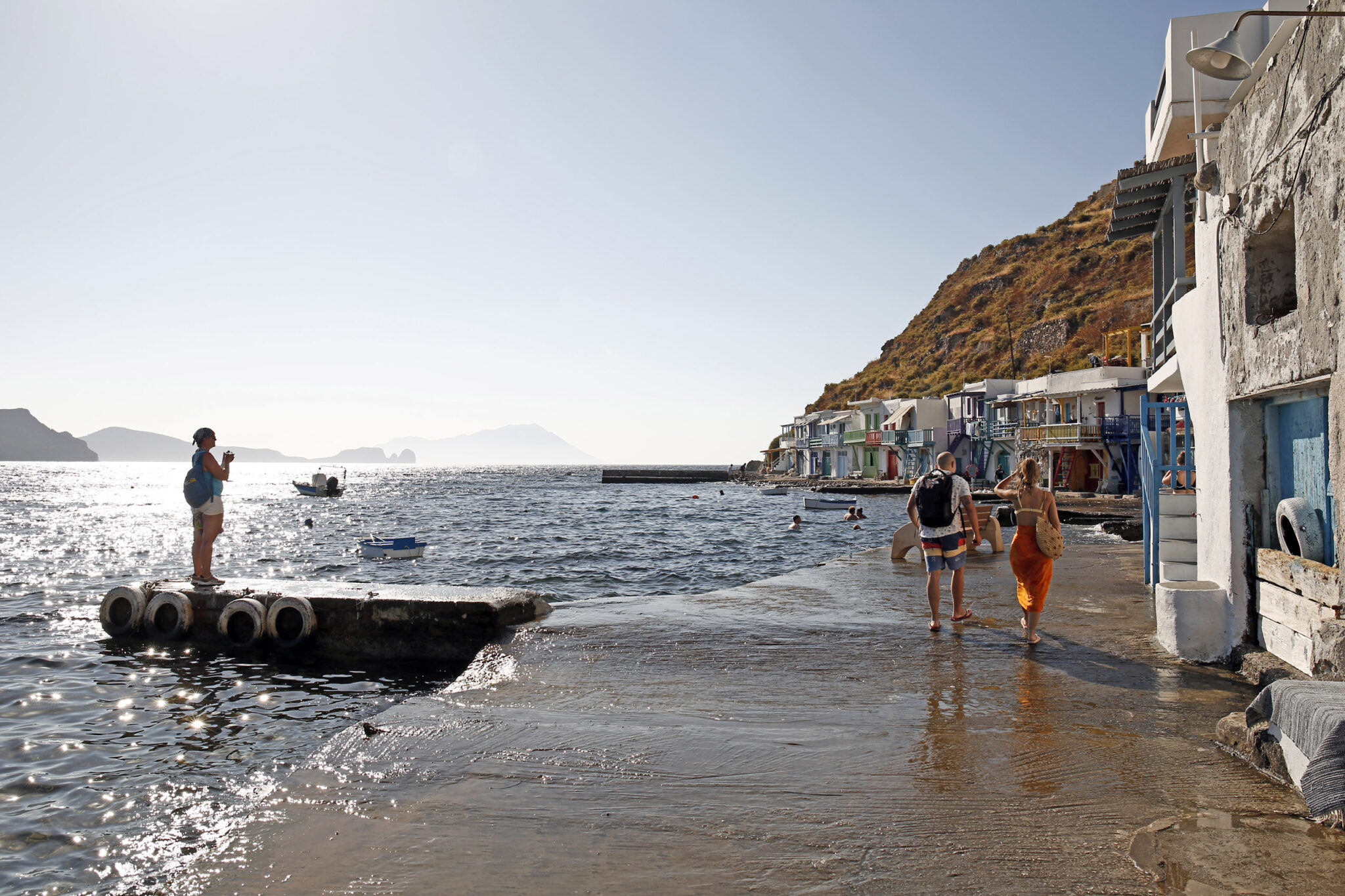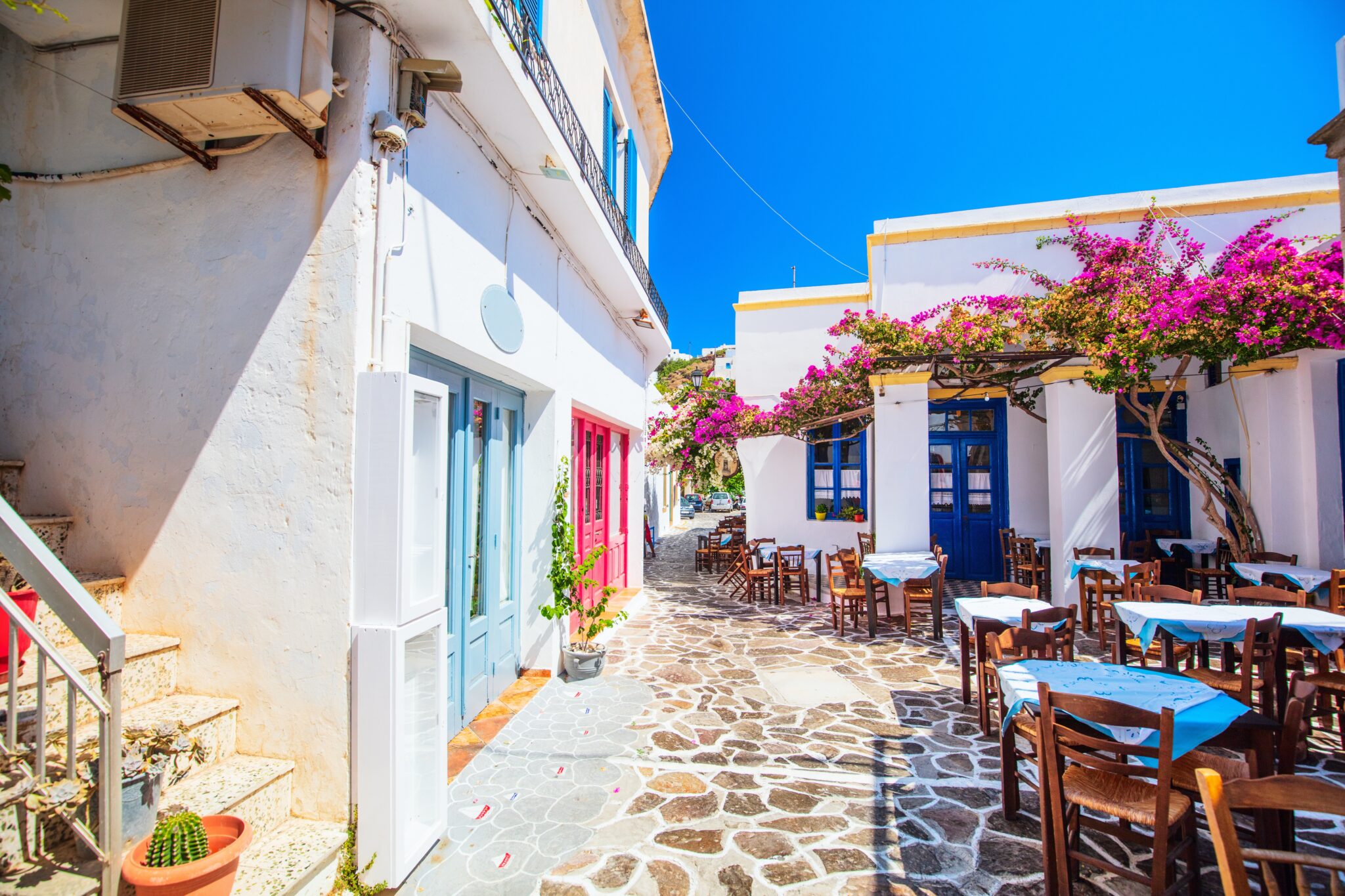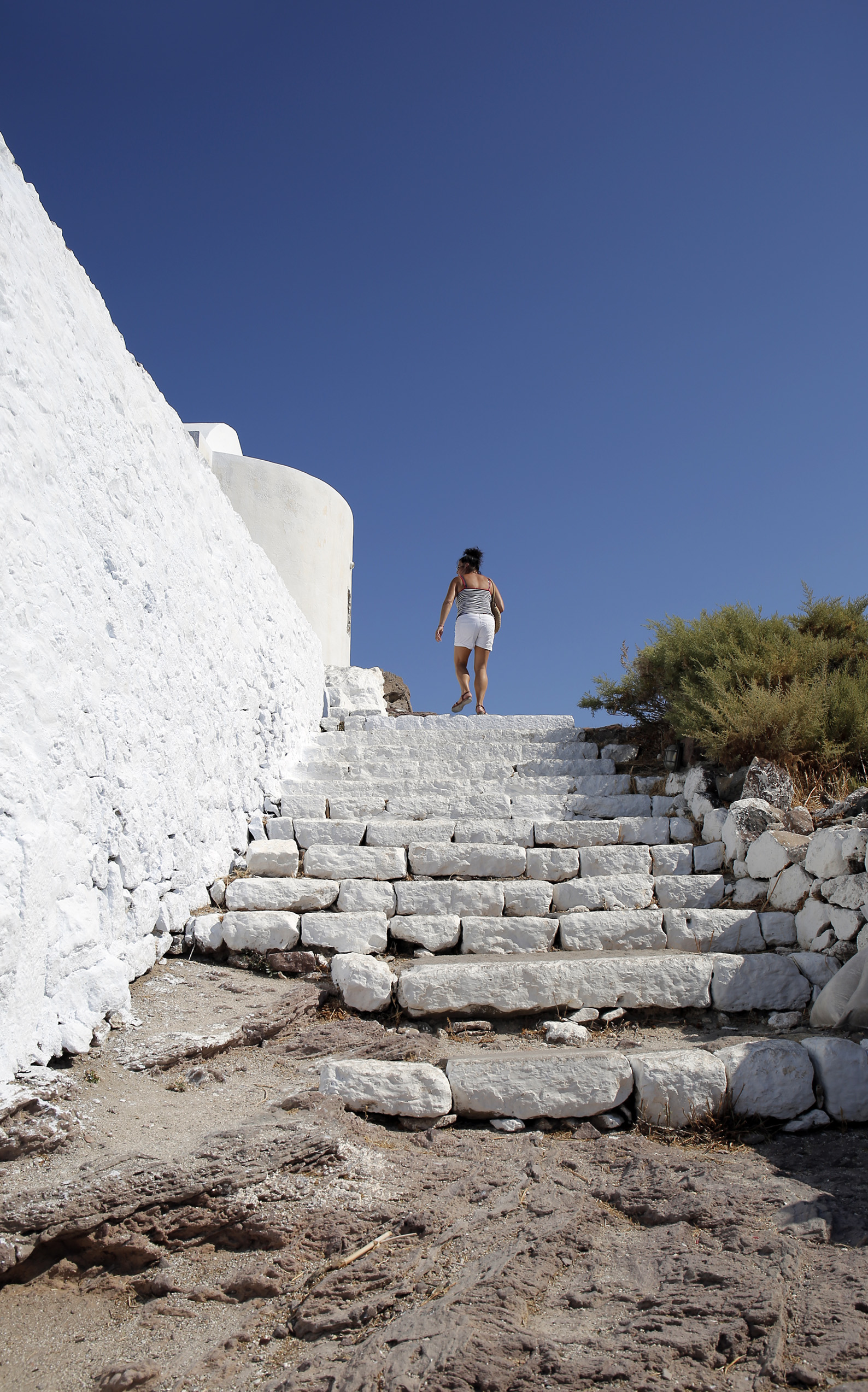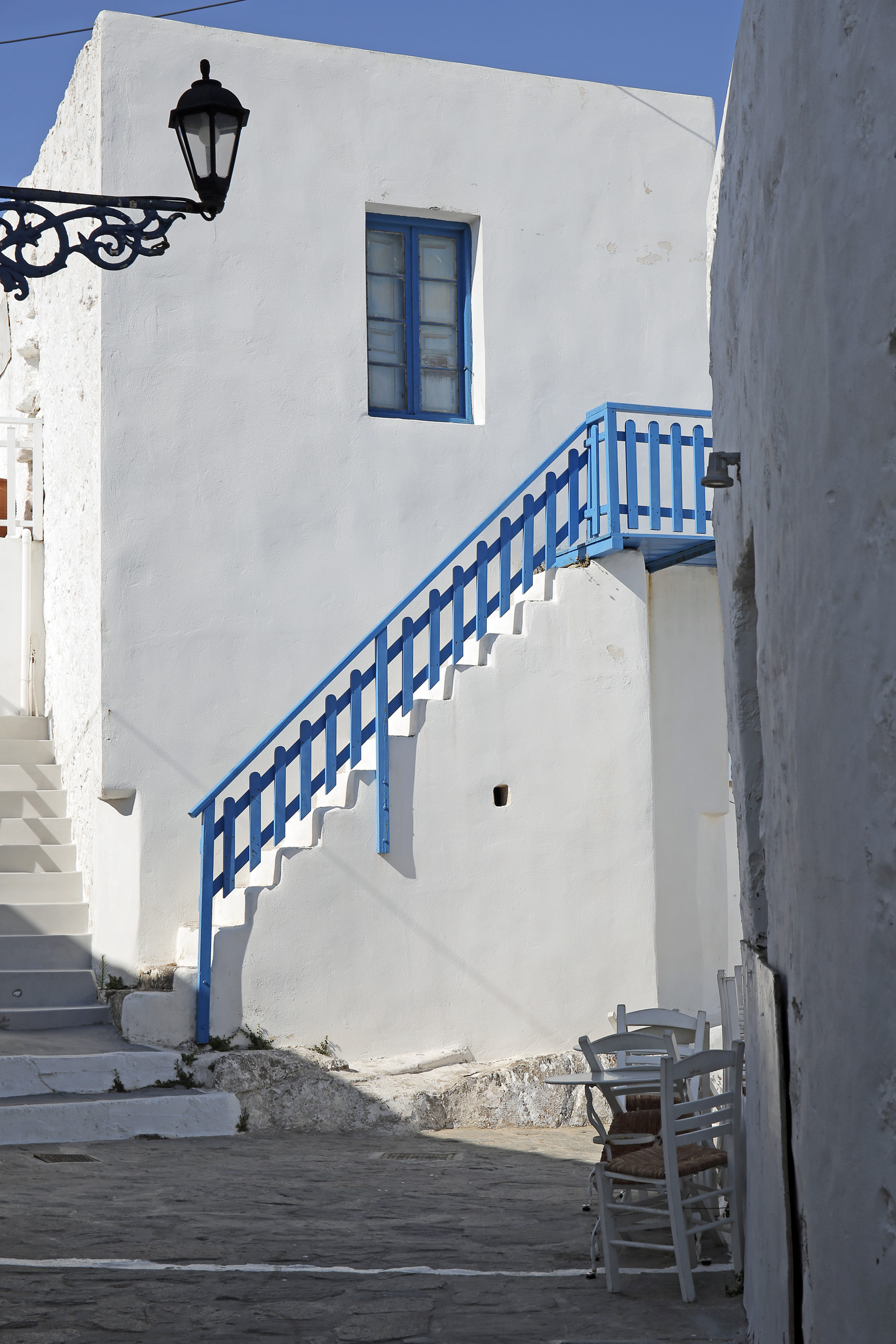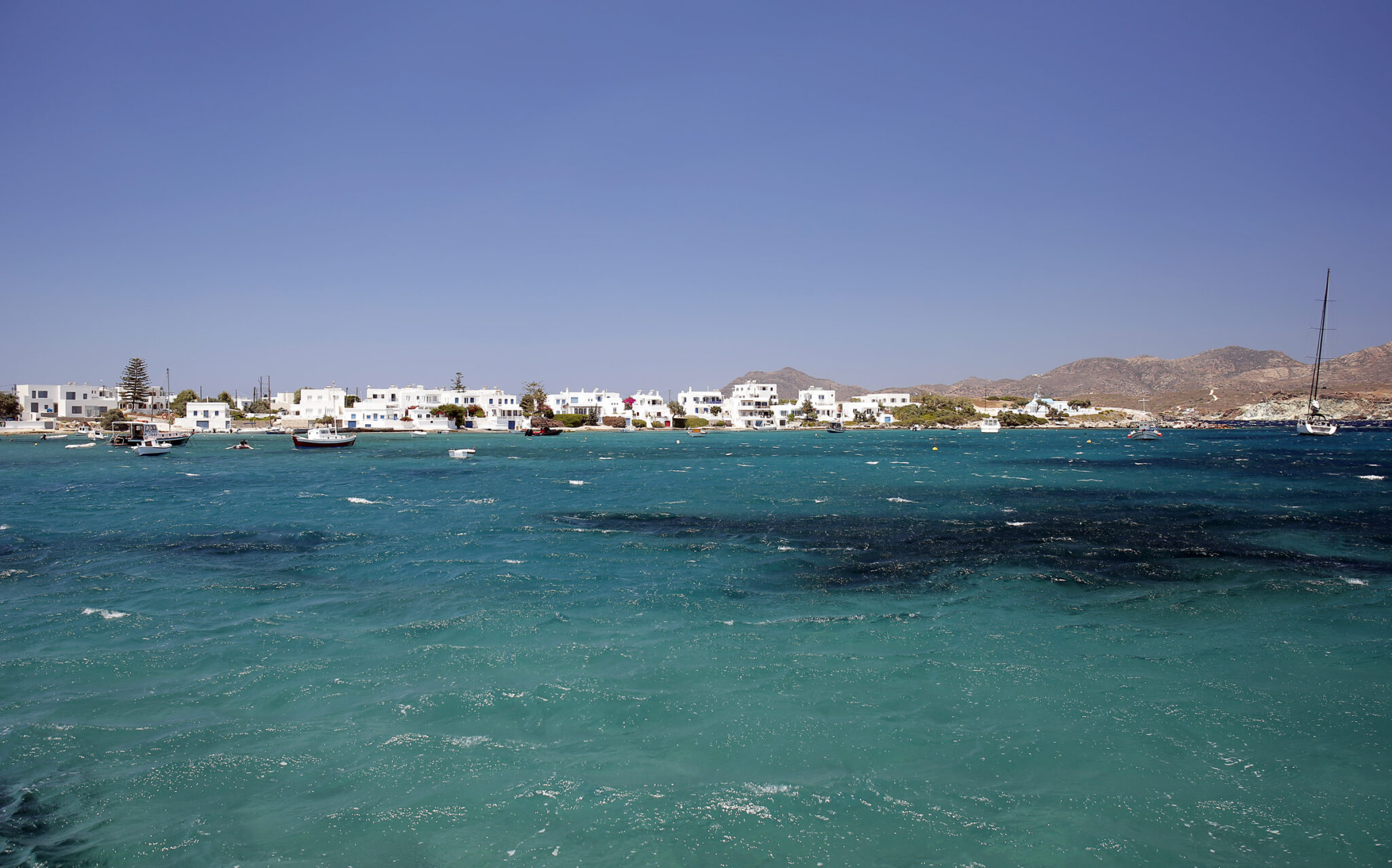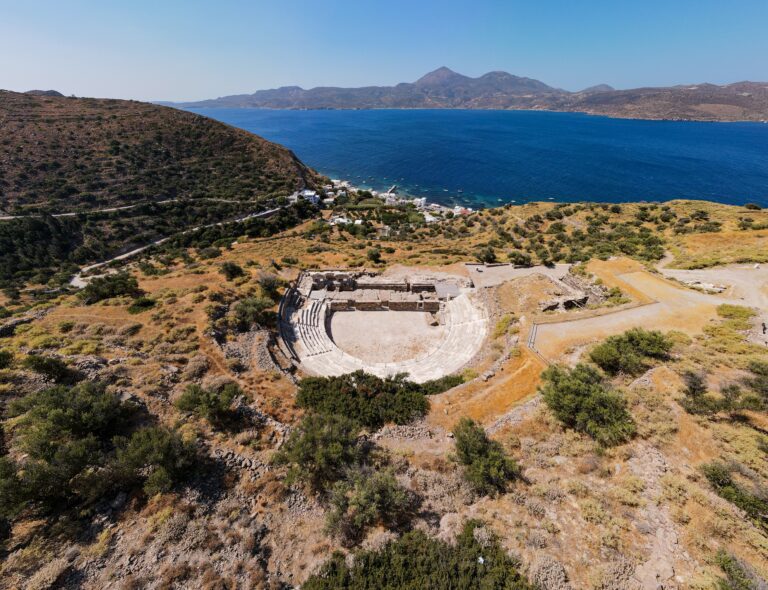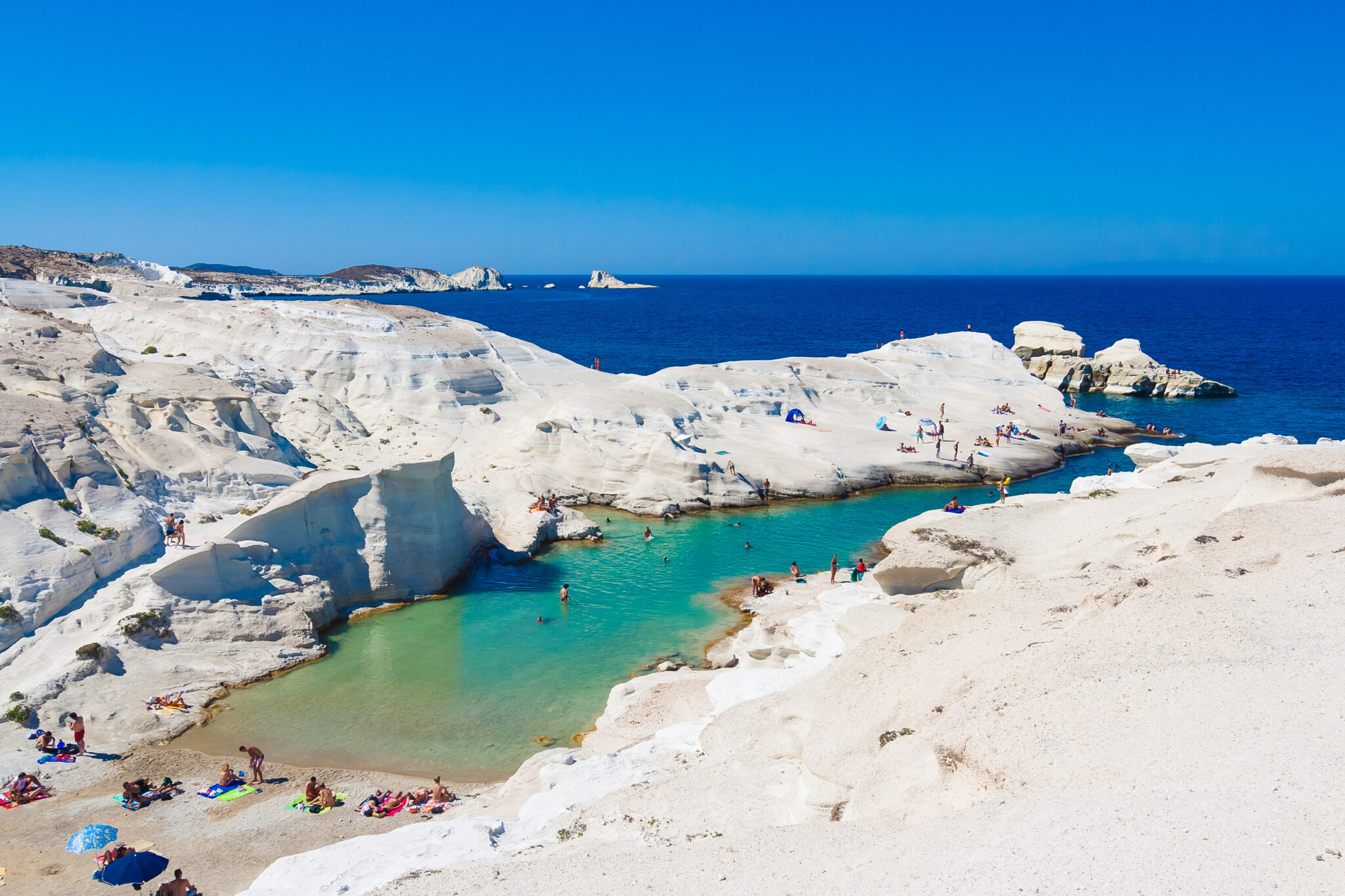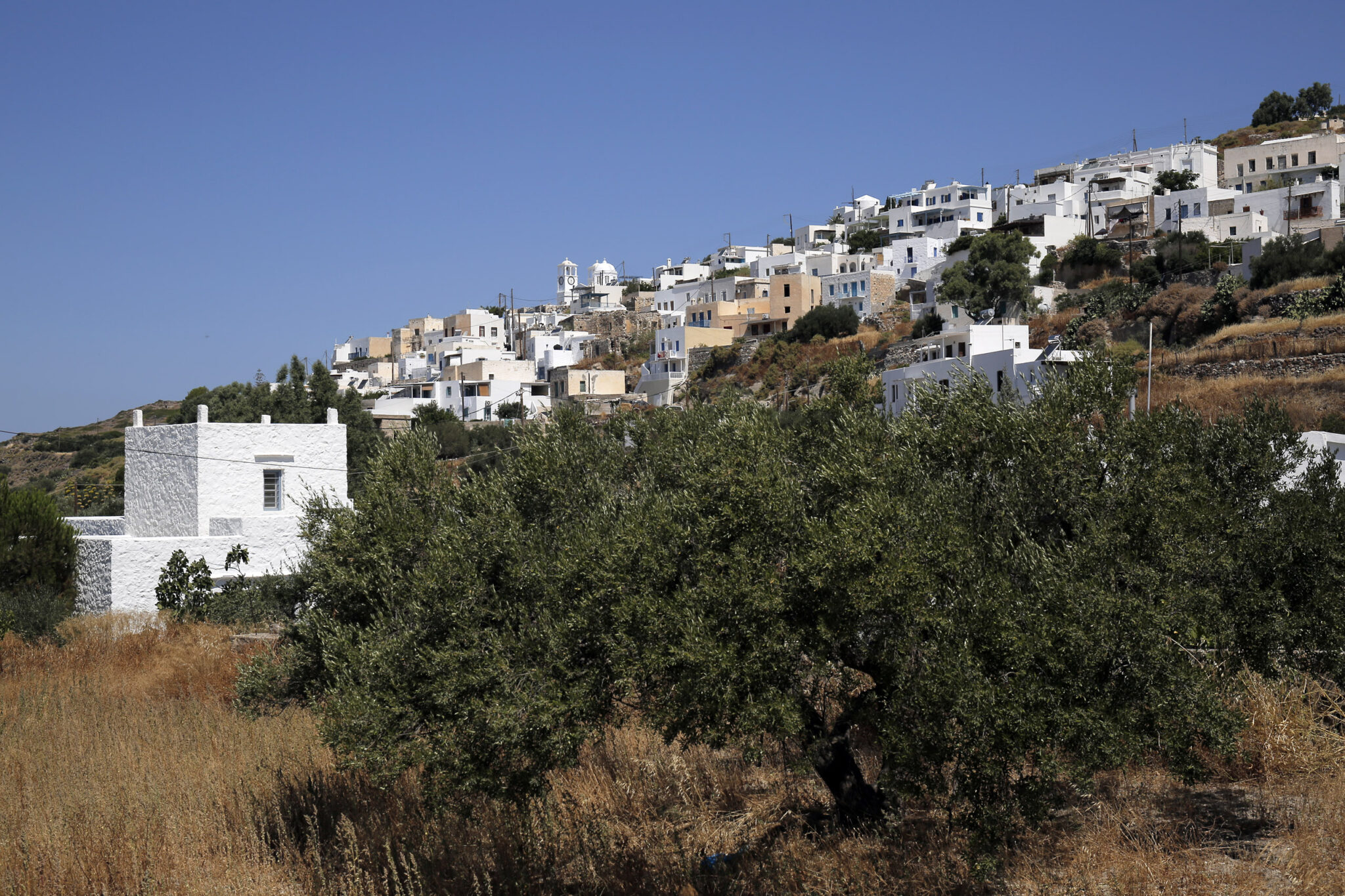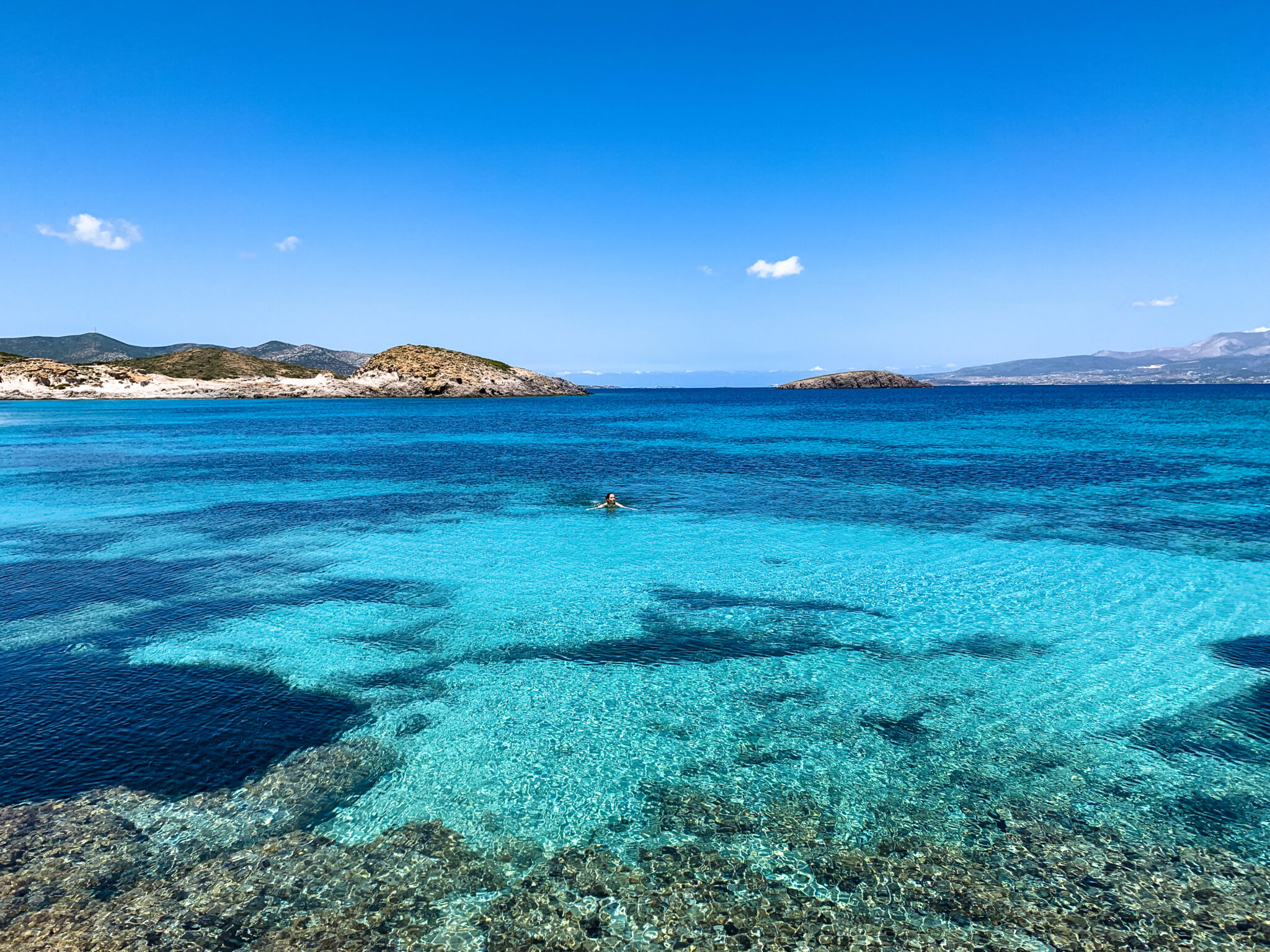With few cultural diversions, scant intriguing villages to get lost in, only a handful of nightlife options, and little in the way of archaeological ruins to explore, visitors to Milos take their inspiration from nature and lose themselves in languid days and star gazing nights.
Birthplace of the Venus de Milo
The Venus de Milo ‘Aphroditi of Milos’ is a renowned statue of the Greek goddess of love that was created during the Hellenistic period, believed to be between 150 and 125 BC. The statue, which stands at 6 ft 8 in and is made of Parian marble, is missing both arms.
It was discovered in 1820 by Yorgos Kentrotas, a Greek farmer, inside a buried niche in the ancient city ruins of Milos, Greece. Although the original appearance of the statue is unknown, it is considered a significant example of ancient Greek sculpture and is prominently displayed at the Louvre Museum in Paris.
Kleftiko
Star of many advertising campaigns for the Aegean, Kleftiko is a magical marine park of soaring sea stacks, mighty arches and lofty white cliffs amid perfect waters. Best visited by boat, it is a maze of caves and shallow, sandy coves. Kleftiko derives from the Greek name for thieves as pirates would hide there, ready to pounce and plunder.
Adamas
One of the largest natural harbours in the Aegean, Adamas (also known as Adamantas) was first transformed from a sleepy fishing hamlet by Sfakian Cretans who fled a failed rebellion in the 1820’s and realised its strategic importance. Filled with yachts and boats in summer, its marble paved promenade is a lively centre with restaurants, tavernas, bars and shops that make up the heart of Milos nightlife. There are a couple of serviceable beaches at Lagada to the east and Papakinou to the west, both walkable.
Catacombs
A short walk from Trypiti, an early Christian burial centre was discovered in 1840, consisting of 126 vaulted graves carved into the soft volcanic rock. Some 5,000 bodies were buried here in three corridors, making them the largest catacombs in Greece. The earliest known Christian site in Greece, they date from the first century when St. Paul was believed to have been shipwrecked on the island. (tel.: 22870 22445 www.catacombs.gr)
Klima
Photogenic, Klima is home to the colourful dwellings known as syrmata, two-storey houses built into the soft volcanic rock right on the water’s edge with the ground floor acting as a boathouse. The reason behind the kaleidoscopic colours of the buildings is unsure but it is thought that they were inspired by the multi-hued rocks of the island. Some of the boathouses have been repurposed as holiday lets and are available to rent for a charismatic island stay.
Mandraki
Next to Sarakiniko, built around the church of Zoodochos Pigi, Mandraki is a small fishing hamlet. The enclosed bay is home to Medusa, a splendidly-sited tarverna, and a clutch of syrmata, the extravagantly painted boathouse that create a magical seaside setting backed by white cliffs.
Plaka
North and above Adamas is the classical centre of Milos, Plaka. The largest of a cluster of four other villages that huddle beneath a crag, it is the island capital and the prettiest spot on the island. A chora of whitewashed houses and winding lanes opens up to reveal some stunning panoramic views. Looming over the town is a volcanic mount topped with the remains of a Venetian Kastro, mysteriously abandoned in the 14th century.
Pollonia
Crouched around a sheltered bay, capped by a church at each end, Pollonia has grown from a sleepy fishing village into a low-key resort. Popular with families and couples alike, the beach is long and sandy and blessed with plenty of shade. A promenade of tavernas and restaurants has grown around the village centre and the ferry to neighbouring Kimolos leaves from here.
Roman Theatre
Dating back to Hellenistic period in the 3rd century BC, the original site was rebuilt in Roman times. Originally holding 7,000 people, today only the first seven rows have been restored and it plays host to cultural events from time to time. The views over Klima and the Aegean are sublime.
The island’s great gift to popular culture was found here in 1820; the Venus de Milo. Discovered by a keen amateur archaeologist from the French navy, she was appropriated for the Louvre. Weighing 900 kilos and at over 2 metres tall, the goddess of love and beauty was reborn as one of the great figures of western art.
Sarakiniko
The single reason that many people visit Milos is this other-worldly lunar landscape on the north coast. Star of a million selfies and social media posts, it is an eerie inlet with sculpted bone-white rocks that seem like recumbent statues. Made of limestone and diatomite, rock layers formed as volcanic tephra fused underwater 2 million years ago trapping fish and shell fossils that can be seen in the rock. Water and wind erosion shaped the soft layers into the strange forms seen today, and the contrast with the cerulean seas is stunning.
Past the cliffs to the right is a half-submerged shipwreck and at the back are abandoned mine tunnels to explore. Bring sunscreen as the light reflecting off the white cliffs is intense and there is little shade.
Trypiti
A mile south of Plaka is the village of Trypiti, whose name means perforated due to the catacombs in the cliffs nearby. Narrow and overlooking the Aegean, it runs from a windmill topped hill down to the fishing hamlet of Klima with its string of colourful waterfront boathouses.
Read also
A Guide to the Best Beaches on the Island of Milos



